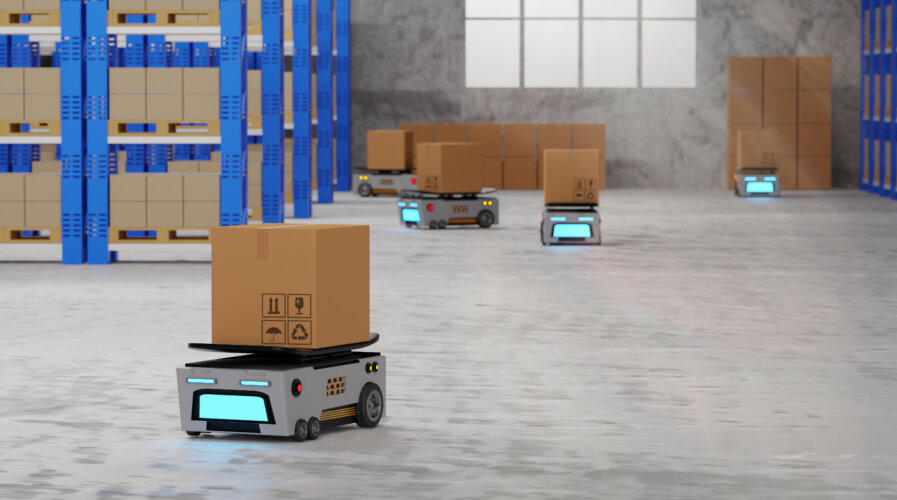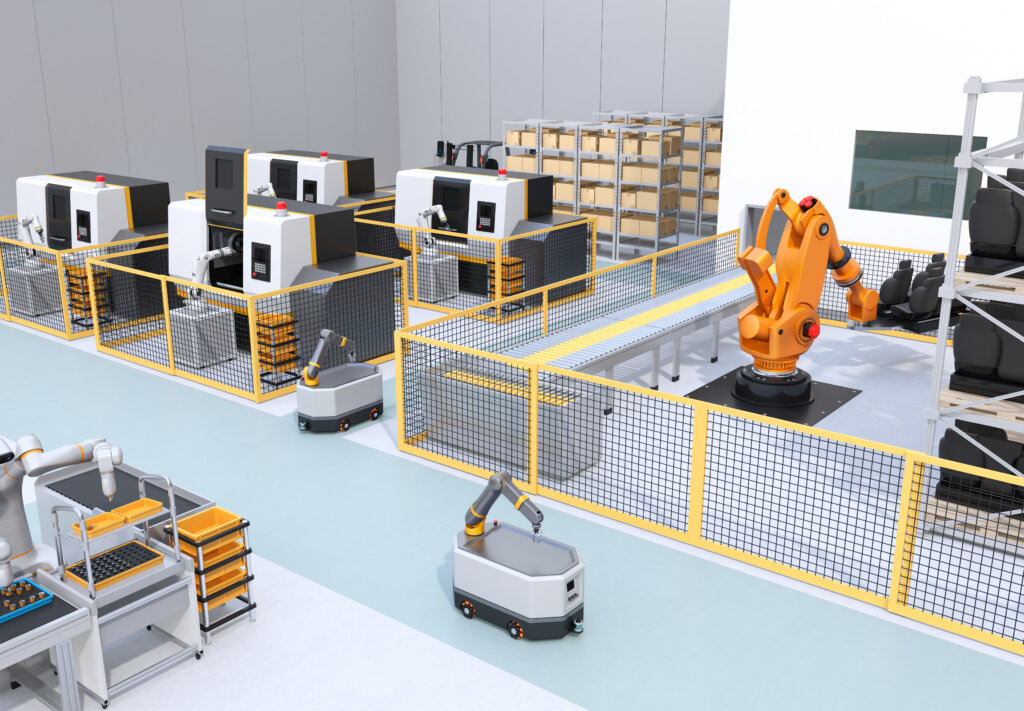
27% of warehouse operators globally and in APAC have already deployed some form of AMRs today. (Source – Shutterstock)
Autonomous mobile robots in shifting worker attitudes from resistance to acceptance
Article By Tan Aik Jin, APAC marketing leader for manufacturing and Singapore ZEC, Zebra Technologies
Amidst the intensifying labor crunch in Asia-Pacific (APAC) where many countries are experiencing a shrinking workforce and a rapidly aging population, companies across various industry sectors are struggling to match labor demand with supply. To address this issue, businesses are leveraging technology – in particular, robotics and automation.
While some believe warehouse and factory workers fear being replaced by robots, statistics have shown otherwise. In fact, in Zebra’s latest global Warehouse Vision Study, many warehouse associates say they believe autonomous mobile robots (AMRs) could make warehouse jobs less stressful, with around nine in 10 associates surveyed agreeing on some level that technology advancements, in general, will make the warehouse environment more attractive to workers like themselves. With the purpose to help and not replace humans, automation technologies like AMRs can deliver outsized benefits, from enhancing safety to boosting operational efficiency and accuracy.
Nearly eight in 10 warehouse associates surveyed (both in APAC and globally) say walking fewer miles per day would make their jobs more enjoyable, even if they had to pick or handle more items. AMRs were built primarily to handle material movements, taking on the one task that workers have always wanted to offload.
Additionally, most associates (83%) who work alongside AMRs today say that dynamic mobile robots have helped reduce walking time. Associates also credit AMRs with helping to increase their productivity (83%), reduce the number of mistakes they make (73%), and facilitate advancement to new roles or opportunities (65%). Three-quarters of associates even agree today that they would feel safe working alongside AMRs, whether or not they have in the past. This data demonstrates that associates are aware and recognize the benefits AMRs can bring to their jobs.
A synergistic collaboration with Autonomous Mobile Robots

Tan Aik Jin, APAC marketing leader for manufacturing and Singapore ZEC, Zebra Technologies
However, AMRs alone are not enough. A cohesive collaboration across the warehouse ecosystem between warehouse operators, manufacturers, third-party logistics (3PLs), and distributors is needed to seamlessly automate workflows and help augment the workforce.
For example, technologies like voice-assisted picking and wearables with augmented reality applications can offer associates step-by-step instructions for each assigned task. Improving working conditions need not be a complicated process – even having real-time alerts when a truck is delayed, followed by a new task assignment to keep them productive could be impactful in creating meaningful work.
Technology is changing the fundamental nature of work for those working hard to keep the supply chain running smoothly, even more so than higher wages, bonuses, or fringe benefits. In light of these developments, automation is quickly becoming the gold standard.
That is because technology leads to more productive and flexible work shifts, especially technologies that automate workflows and information flows. Simple tasks are taking half the time they used to, while other tasks have come off their to-do lists completely and have been transitioned to an automation platform. Workers are then able to do more in a shorter amount of time, greatly improving productivity and freeing up capacity for higher-value tasks.

Workers are still an important asset in the warehouse, and it is crucial for decision-makers to balance both the needs of workers and automation. (Source – Shutterstock)
Alleviating the talent crunch
Talent is becoming increasingly difficult to attract and retain across many different industries, thereby affecting warehouse labor. Take the semiconductor industry, for example – Singapore’s semiconductor industry is facing an acute talent crunch, even as chipmakers invest billions to expand their operations and create thousands of jobs in the country. Automation could be a key ingredient to achieving job satisfaction, which underpins retention and recruitment efforts as well as overall operational outcomes. A majority (83% both in APAC and globally) of warehouse associates surveyed in the same Zebra Study say they are more likely to work for an employer that gives them modern devices to use for tasks versus an employer that provides older or no devices. More significantly, both decision-makers and front-line workers are concerned that business objectives will not be met unless more technology investments are made to improve operations.
The misconception that workers would be a roadblock to the widespread adoption of advanced technologies is countered by positive on-ground sentiments toward automation. Now, workers are increasingly expecting employers to provide technology that augments their capabilities and increase contributions.
Balancing the scales
The Zebra Study respondents believe automation may help keep more people in their jobs and fill empty ones. As such, warehouse operators are spending a considerable amount on technologies that support workforce augmentation and workflow automation. In fact, 27% of warehouse operators globally and in APAC have already deployed some form of autonomous mobile robots today. Within five years, that number is expected to grow to 92% in APAC and 90% worldwide.
Additionally, 85% of warehouse decision-makers say they have implemented mobility solutions, and most feel they are properly optimizing the use of such devices right now to fit task, safety, and ergonomic requirements. Employers are also leveraging technology to create more flexible work shifts, which is necessary to stay ahead of the competition and attract the best talent in the industry, amidst the intense labor crunch in the region.
Ultimately, workers are still an important asset in the warehouse, and it is crucial for decision-makers to balance both the needs of workers and automation. Without workers, automation would not hold as much value. At the same time, without automation, the data shows that workers do not feel as valued. At the end of the day, the true value of autonomous mobile robots and other automation technologies is derived from how much they help bolster people’s productivity and efficiency – both of which influence throughput, capacity, and customer satisfaction.
Manufacturers need to take tangible steps to create intelligent factories – with both people and robots – to empower connected front-line workers to drive decisions that enable operations to achieve sustainable just-in-time production and fulfillment. Leveraging technology and automation to augment human labor will be the way forward to improve processes and efficiency.
The views in this article is that of the author and may not reflect the views of Tech Wire Asia.
READ MORE
- Safer Automation: How Sophic and Firmus Succeeded in Malaysia with MDEC’s Support
- Privilege granted, not gained: Intelligent authorization for enhanced infrastructure productivity
- Low-Code produces the Proof-of-Possibilities
- New Wearables Enable Staff to Work Faster and Safer
- Experts weigh in on Oracle’s departure from adland


